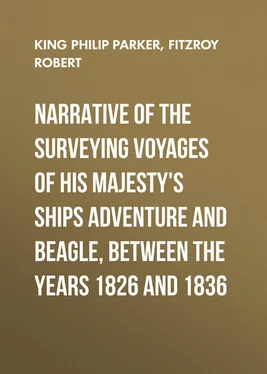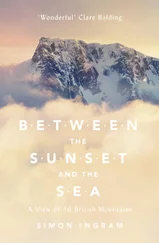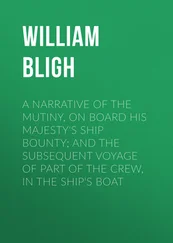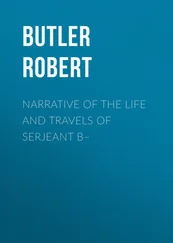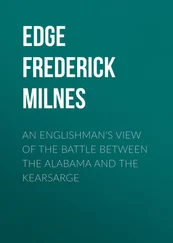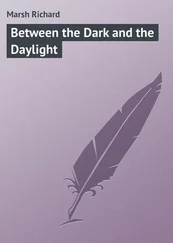Robert Fitzroy - Narrative of the surveying voyages of His Majesty's ships Adventure and Beagle, between the years 1826 and 1836
Здесь есть возможность читать онлайн «Robert Fitzroy - Narrative of the surveying voyages of His Majesty's ships Adventure and Beagle, between the years 1826 and 1836» — ознакомительный отрывок электронной книги совершенно бесплатно, а после прочтения отрывка купить полную версию. В некоторых случаях можно слушать аудио, скачать через торрент в формате fb2 и присутствует краткое содержание. Издательство: Иностранный паблик, Жанр: foreign_antique, foreign_prose, на английском языке. Описание произведения, (предисловие) а так же отзывы посетителей доступны на портале библиотеки ЛибКат.
- Название:Narrative of the surveying voyages of His Majesty's ships Adventure and Beagle, between the years 1826 and 1836
- Автор:
- Издательство:Иностранный паблик
- Жанр:
- Год:неизвестен
- ISBN:нет данных
- Рейтинг книги:3 / 5. Голосов: 1
-
Избранное:Добавить в избранное
- Отзывы:
-
Ваша оценка:
- 60
- 1
- 2
- 3
- 4
- 5
Narrative of the surveying voyages of His Majesty's ships Adventure and Beagle, between the years 1826 and 1836: краткое содержание, описание и аннотация
Предлагаем к чтению аннотацию, описание, краткое содержание или предисловие (зависит от того, что написал сам автор книги «Narrative of the surveying voyages of His Majesty's ships Adventure and Beagle, between the years 1826 and 1836»). Если вы не нашли необходимую информацию о книге — напишите в комментариях, мы постараемся отыскать её.
Narrative of the surveying voyages of His Majesty's ships Adventure and Beagle, between the years 1826 and 1836 — читать онлайн ознакомительный отрывок
Ниже представлен текст книги, разбитый по страницам. Система сохранения места последней прочитанной страницы, позволяет с удобством читать онлайн бесплатно книгу «Narrative of the surveying voyages of His Majesty's ships Adventure and Beagle, between the years 1826 and 1836», без необходимости каждый раз заново искать на чём Вы остановились. Поставьте закладку, и сможете в любой момент перейти на страницу, на которой закончили чтение.
Интервал:
Закладка:
This account was published only seven years after the voyage, and the exaggeration, if any, might have been exposed by numbers. There can be no doubt, that among five hundred persons several were of a large size; but that all were four inches taller than six feet must have been a mistake. The commodore says, that he "caused them all to be seated," and in that position, from the length of their bodies, they would certainly appear to be of very large stature. 84 84 See a letter from Mr. Charles Clarke, an officer on board the Dolphin, to Mr. Maly, M.D., secretary of the Royal Society, dated Nov. 3, 1766, read before the Royal Society on 12th April 1767, and published in the fifty-seventh volume of the Phil. Trans., part i. p. 75, in which an exaggerated account is given of this meeting. The men are described to be eight feet high, and the women seven and a half to eight feet. "They are prodigious stout, and as well and proportionably made as ever I saw people in my life." This communication was probably intended to corroborate the commodore's account.
Shortly afterwards, Wallis, in the neighbourhood of Cape Virgins, communicated with the same people, and as the story of the Patagonian giants had been spread abroad, and was very much discredited, he carried two measuring rods with him; and says, in his narrative, "We went round and measured those that appeared to be the tallest. One was six feet seven inches high, several more were six feet five, and six feet six inches; but the stature of the greatest part of them was from five feet ten to six feet."
In the voyage of the Santa Maria de la Cabeza, 85 85 Ultimo Viage, p. 21.
1786, it is related that the height of one or two Patagonians, with whom the officers had an interview, was six feet eleven inches and a half (of Burgos), which is equal to six feet four inches and a half (English). This man wore a sword, on which was engraved "Por el Rey Carlos III.," and spoke a few words in Spanish, proofs of his having had communication with some of the Spanish settlements. It does not, however, appear from the account that there were many others, if any, of that height.
Of all the above accounts, I think those by Bougainville and Wallis the most accurate. It is true, that of the number we saw, none measured more than six feet two inches; but it is possible that the preceding generation may have been a larger race of people, for none that we saw could have been alive at the time of Wallis's or Byron's voyage. The oldest certainly were the tallest; but, without discrediting the accounts of Byron, or any other of the modern voyagers, I think it probable that, by a different mode of life, or a mixture by marriage with the southern or Fuegian tribes, which we know has taken place, they have degenerated into a smaller race, and have lost all right to the title of giants; yet their bulky, muscular forms, and length of body, in some measure bear out the above accounts; for had the present generation proportionate limbs, they might, without any exaggeration, justify the account of Commodore Byron. The Jesuit Missionary Falkner, 86 86 Falkner, according to Dean Funes, was originally engaged in the slave trade at Buenos Ayres; but afterwards became a Jesuit, and studied in the college at Cordova, where, to an eminent knowledge of medicine, he added that of theology. He is the author of a description of Patagonia, published in London after the expulsion of the Jesuits. – ( Ensayo de la Historia Civil del Paraguay, Buenos Ayres, y Tucuman, por el Doctor Don Gregorio Funes, iii. p. 23, note. Published at Buenos Ayres. 8vo. 1817. )
who, from an intercourse of forty years with the Indians of South America, must be considered as one of the best authorities, says, speaking of a Patagonian named Cangapol, "This chief, who was called by the Spaniards the Cacique Bravo, 87 87 See Dean Funes's account of Buenos Ayres, and of the Indian tribes, vol. ii. 394.
was tall and well-proportioned; he must have been seven feet and some inches in height, because on tiptoe I could not reach the top of his head: I was very well acquainted with him, and went some journeys in his company: I do not recollect ever to have seen an Indian that was above an inch or two taller than Cangapol. His brother Sausimian was but about six feet high. The Patagonians or Puelches are a large-bodied people; but I never heard of that gigantic race which others have mentioned, though I have seen persons of all the different tribes of the Southern Indians."
This is an account in 1746, only twenty years before that of Bougainville. Taking all the evidence together, it may be considered, that the medium height of the males of these southern tribes is about five feet eleven inches. The women are not so tall, but are in proportion broader and stouter: they are generally plain-featured. The head is long, broad and flat, and the forehead low, with the hair growing within an inch of the eyebrows, which are bare. The eyes are often placed obliquely, and have but little expression, the nose is generally rather flat, and turned up; but we noticed several with that feature straight, and sometimes aquiline: the mouth is wide, with prominent lips, and the chin is rather large; the jaws are broad, and give the face a square appearance; the neck is short and thick; the shoulders are broad; the chest is broad, and very full; but the arm, particularly the fore-arm, is small, as are also the foot and leg; the body long, large and fat, but not corpulent. Such was the appearance of those who came under my observation.
As to their character, the Patagonians are friendly, without that disposition to quarrel, after the novelty of first acquaintance has worn off, which is so common among savages in general. This probably arises from interested motives, certainly not from fear, unless it be the fear of being avoided instead of visited by the ships which pass by, and from which they procure many useful articles, and many temporary gratifications.
Swords, long knives, tobacco, Paraguay tea, bits, saddles, guns, lead for balls, red cloth, beads (particularly of a sky-blue colour), flour, sugar, and spirits, are much desired in exchange for their peltry and guanaco meat; but they have no idea beyond that of satisfying the wants of the moment.
After a few pounds of tobacco had been distributed amongst them, although they are very fond of smoking, it became quite a drug, and it was necessary to produce something new to excite their attention. From Maria's influence, and the reference so constantly made to her, it would seem that she was considered as cacique of the tribe; but her apparent superiority may arise from her connexion with Bysante, of whom they all spoke as 'El Cacique Grande,' or from the attention paid to her by ships with whom they communicate.
The people of this tribe seemed to live together harmoniously; no bickerings or jealous feelings were observed, and certainly none were expressed by any one of our bulky friends on witnessing another receiving a valuable present, or a good exchange for his property.
At sunset our people were ordered to embark, upon which the price of Patagonian goods immediately fell, at least, a thousand per cent., though many held back in expectation of the next day. Maria put into the boat, after my refusal to let her go on board to pass the night, two bags, and asked me to send her flour and sugar. She was most importunate for aqua ardiente, which, however, I refused. Her constant cry was "It is very good to be drunk; I like drinking very much; rum is very good. – Give me some?" ('Muy bueno es boracho, mucho mi gusta, mucho mi gusta de beber, muy bueno es aqua ardiente. – Da me no mas?')
Among them was a Fuegian Indian; but it did not appear clearly whether he was living with them permanently, or only on a visit. Some of us thought we understood the account of one of the Patagonians, who seemed to be the most interested about him, to be, that a master of a sealer had left him amongst them. We knew him instantly by his squalid and comparatively diminutive appearance, and were confirmed in our ideas by his recognition of the words 'Hosay' and 'Sherroo.' The Patagonian name for a ship is 'Carro grande,' and for a boat 'Carro chico,' a mixture of their own and the Spanish language. All that I could understand of his history was, that he was Cacique of some Indian tribes at a distance: he was evidently a great favourite, and although Maria spoke generally with much contempt of the Fuegian Indians, she had patronised this stranger, for he lived in her toldo, and shared all the presents that were made to her.
Читать дальшеИнтервал:
Закладка:
Похожие книги на «Narrative of the surveying voyages of His Majesty's ships Adventure and Beagle, between the years 1826 and 1836»
Представляем Вашему вниманию похожие книги на «Narrative of the surveying voyages of His Majesty's ships Adventure and Beagle, between the years 1826 and 1836» списком для выбора. Мы отобрали схожую по названию и смыслу литературу в надежде предоставить читателям больше вариантов отыскать новые, интересные, ещё непрочитанные произведения.
Обсуждение, отзывы о книге «Narrative of the surveying voyages of His Majesty's ships Adventure and Beagle, between the years 1826 and 1836» и просто собственные мнения читателей. Оставьте ваши комментарии, напишите, что Вы думаете о произведении, его смысле или главных героях. Укажите что конкретно понравилось, а что нет, и почему Вы так считаете.
